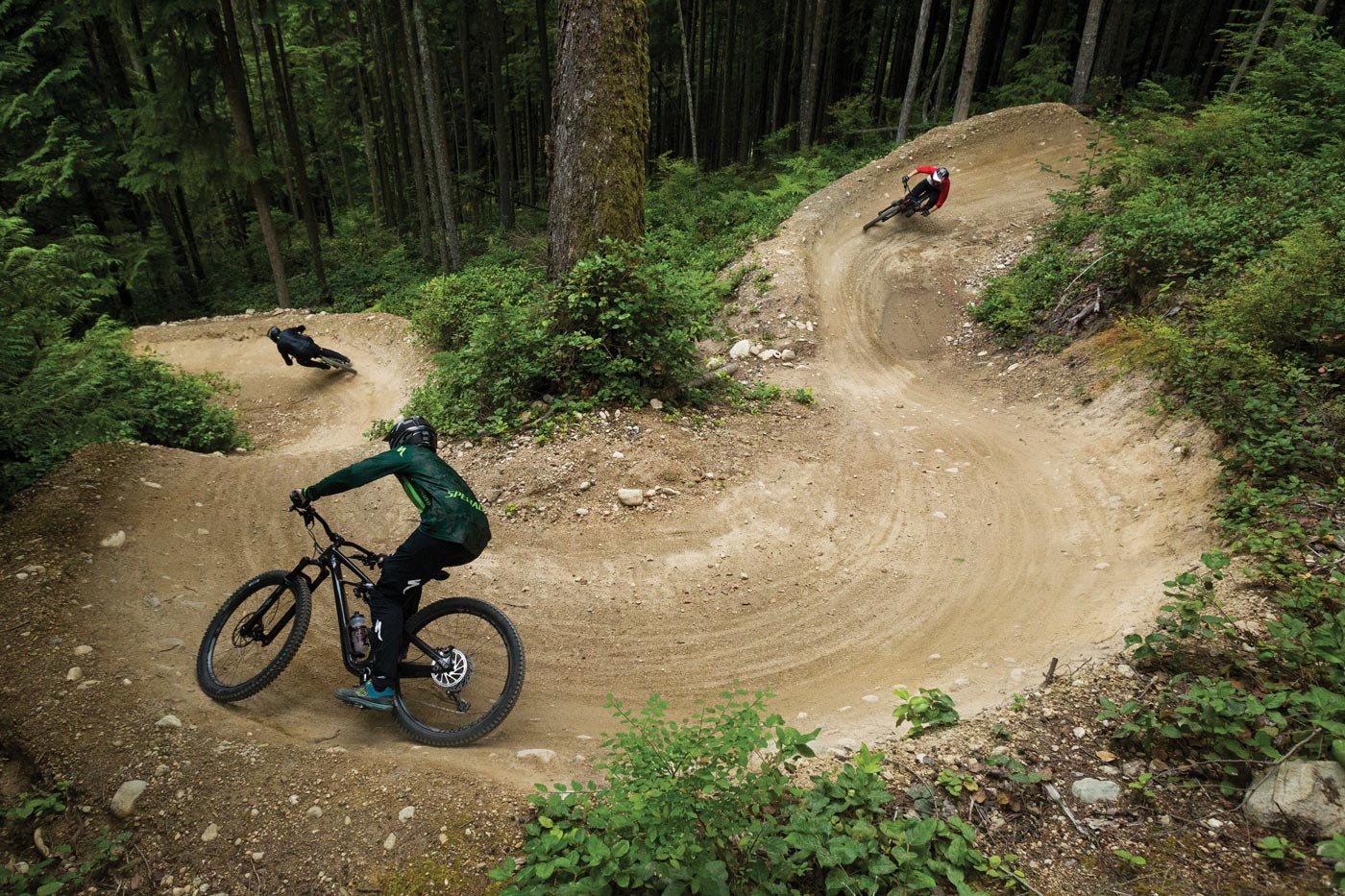How can I best explain this? Imagine you were riding this bike down a rough trail blindfolded (okay, yeah, that wouldn’t work, you wouldn’t make it very far…) Let me start again; if you were to ride this bike down a really rough trail, without looking down at the bike, purely based off the way that it handles, you would swear that you were riding a full blown downhill bike.
It is pretty amazing that a company has managed to build a trail bike with single crown forks that truly does descend on par with a DH bike. But that isn’t even the most remarkable thing about how the new Enduro rides. What really blows your mind is how efficiently it pedals. Getting back to my earlier analogy about imagining you were riding this bike along a trail, without looking down at it, however this time you’re riding it up the trail, not down – you would never in a million years tell me that the bike that you’re riding packs a full 170mm of rear travel. Not even in a billion years. Specialized haven’t just made a slightly better version of their Enduro thoroughbred for 2017. They have in fact, for the most part at least, reinvented the entire rulebook on how capable, and at the same time versatile, a single mountain bike can be.
Let me ask you a question: What do you get when you cross downhilling with uphilling during the same ride? Enduro. Oh hold on, I see what they did there…

The Enduro has been around for a staggering 17 years, having first hit dealer floors way back in 1999. Though much has changed with the bike itself, its intentions and Specialized’s end goal remain pretty much the same;
“Create a bike with as much suspension travel and burliness as possible that can still be pedaled to the top of a trail”.
The existing ‘Enduro’ had earned itself the reputation of being one of the most successful and respected bikes on the enduro market. However, for as good as a bike is, it can always be improved upon. And with that Specialized’s engineering team got to work…
Recently we were invited up to the Sunshine Coast, British Columbia, Canada, for the launch of the new bike. As I sat there on the plane heading over to the launch, I was really, really, really hoping Specialized were going to present us with a trail bike that featured a single sided seat mast, akin to the stunning Demo DH frame design. However that wasn’t to be. The engineering team at Specialized did consider the idea when they began working on the ‘new enduro’ project, but it turns out they quickly dismissed that concept for the Enduro based on several major factors. Not a single one-sided prototype frame was ever even made. Anyways that’s enough dwelling on what ‘could have been’. When you stand back and look at the new Enduro it is hard not to be wrapped up in the overall sexiness of the frame’s clean lines and perfect angles. It looks fast standing still. Sure, the new Enduro’s silhouette may look similar to that of the old bike, in that it still has its familiar X-style frame design and it’s still centred around the proven FSR rear suspension platform design, those general aesthetics of the bike are the only thing that carries over from the previous generation. Everything has been tweaked, reinvented and or supercharged. The results? A bike that boasts the ability to make you feel like you’re a much better rider than you actually are!

So the 2017 Enduro line-up comprises of four models and each model is available as a specific 29’er or 650b frame option. The 29’er has been designed so that 27.5+ wheels, or ‘6fattie’ as Specialized prefer to call them, can be fitted without needing to change anything else on the bike. The four models are as follows; S-works, Pro, Elite and Comp. Both the S-Works and Pro models frame’s features full carbon front and rear ends. The Elite’s frame features a carbon front triangle fitted to an alloy rear end. And the Comp model features a full alloy frame. All models are available in sizes small – extra large.
Okay so what are the major changes on the new models? Well firstly, rear travel has been increased. The 650b version pumps out a whopping 170mm at both front and rear, and the 29’er bike now packs 165mm at the rear and 160mm up front.
As to be expected, the main focus when developing the new bike was its handling. Yep you guessed it, the ‘longer toptube, lower standover hight, short rear end and slacker headangle’ mantra of modern trail bike design has certainly been applied here. The head angle on the 29’er model has been raked out by 1.5 degrees and now sits at a slack 66 degrees. However, Specialized felt that the 650b model’s headangle was perfect on the previous bike which means it has remained at 65.5 degrees. Top tube length, or ‘reach’ as it is known, has grown and now sits at 430mm (size medium frame) for both 29’er and 650b versions. To aid the bikes ability to climb step pinches, the seat tube angle has been steepened to 76 degrees. Bottom bracket height with the 29 x 2.3in tyre remains roughly the same at 352mm.
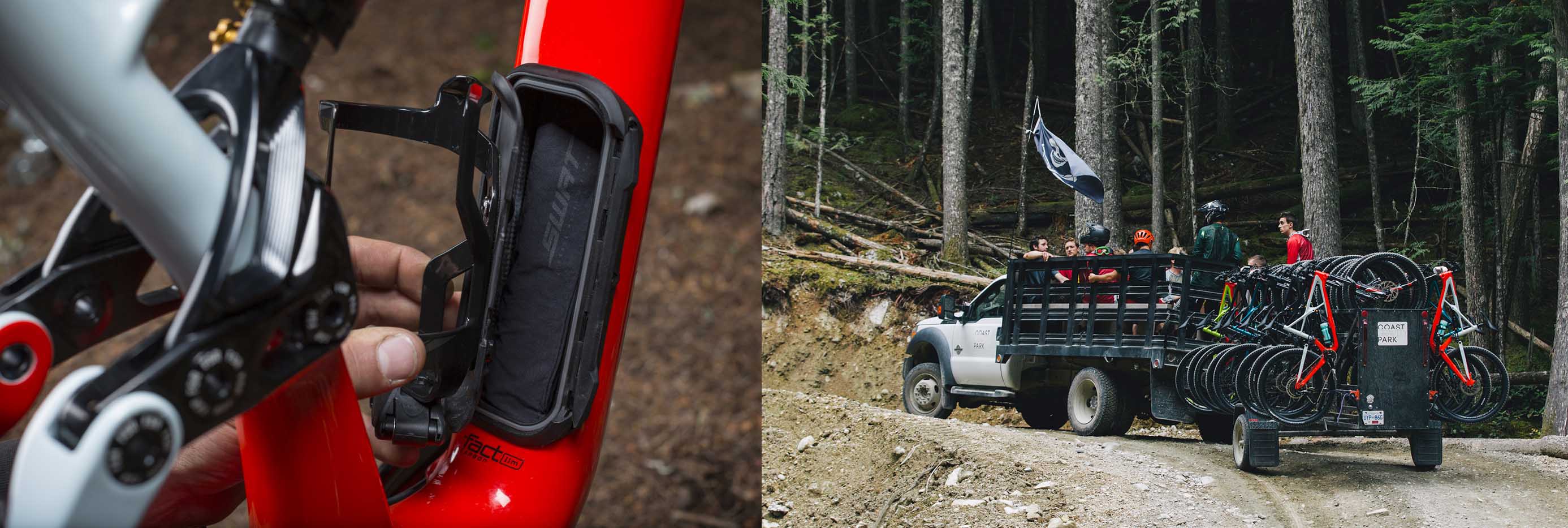
All carbon Enduro’s now feature a (f*king awesome) SWAT ‘door’ integrated into the down tube. Located underneath the water bottle cage, the SWAT door allows you to stash all manner of things such as tools, a spare tube, a rain coat and food. Such a good concept and it works perfectly.
The seat stays have been greatly bulked up and the rear end now features a bridgeless design, allowing for more tyre clearance and increased compatibility. The Enduro is a dedicated single-chainring-only bike and in fact this is the first trail bike Specialized has ever committed that concept to.
Boost axle spacing is featured at both ends of the bike, 15 x 110mm up front and 12 x 148mm rear, which greatly increases the bikes stiffness and at the same time, improves tyre clearance.
Every pivot on the bike now features the exact same size sealed bearings and thanks to the revised, burlier links, the actual size of the bearing units has increased. And interestingly, Specialized have decided to move away from a PressFit 30 bottom bracket and the new bike now features a traditional threaded BB.
And finally, Specialized have really cleaned up the new Enduro’s cable routing. Gone is the cluster of cables that used to flail around the underside of the bottom bracket, replaced by much neater, more efficient internal cable routing.

As I mentioned earlier, Specialized opted to launch the new bike on BC’s Sunshine Coast, which just so happens to be the location of the Coast Gravity Park. For those of you playing along at home that might not know, the Coast Gravity Park is kind of like a mini version of the Whistler bike park. The park and its trail network was the brainchild of Curtis and Dylan from the Coast Crew (whom just so happen to be Specialized pro riders themselves). The set-up that they’ve created is nothing short of amazing. Personally I enjoyed riding there way more than Whistler, due mostly to the quality of the trails and the super chilled vibes amongst all the riders and staff. As the crow flies, the Sunshine Coast is about an hour directly East of Whistler, however you have to catch a ferry (or if you’re super lucky like we were, you can fly there via sea plane). So we spent a full day at the park shuttling laps. My weapon of choice that day was the 650b Pro model.
Setting up the suspension is rapid thanks to the auto sag valve, and there are fewer clicks needed to dial through to the ultimate setting for your ride. As by nature it’s a fairly stiff chassis, it holds turns, tracks well and can take tight bends with style. Interestingly this bike (along with every 650b Enduro) comes spec’d with some seriously meaty 2.6” tyres. They looked a little odd seeing such a big tyre on a trail bike, I guess my brain connected the extra size to the fact that they must then be way heavier, which actually isn’t the case at all. Those 2.6” tyres offer an immense amount of grip. That extra width, especially in the rear, did make it just that little bit harder to really get the tyres onto edge knobs – you really have to lay the bike way over in the corners to learn that its limitations are way beyond what you’d expect. They felt best on rougher, more natural sections of trail, where they seemed to smooth out everything in their path. The 650b Enduro was impressively forgiving on the steep, effortlessly rolling through technical drops, rocks and roots. When you get the bike going downhill, that 66 degree head angle is most definitely noticeable. It’s incredible just how well this bike handles steep, high speed descents.
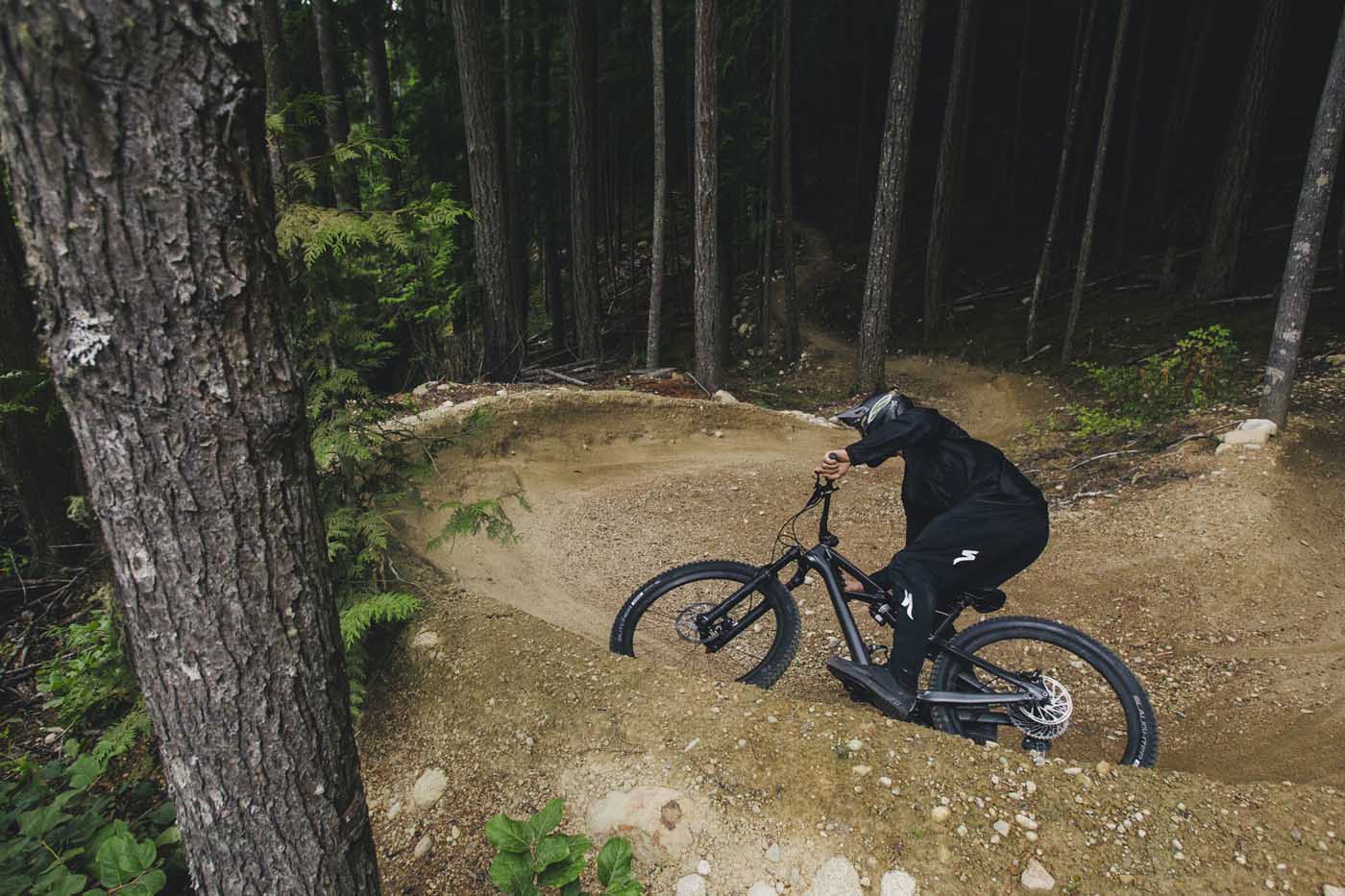
After our visit to the Coast Gravity Park we spent the following two days exploring the network of amazing trails through the Canadian wilderness just outside the quant town of Sechelt. I switched bikes for the remainder of the trip and rode a 29’er, again I opted for the Pro model which is 1 level down from the top spec. At press camps when test riding bikes, I always prefer to not ride the highest spec level offered as the whole reason I’m there is to experience how the actual frame/bike handles. I don’t want my experience falsely sugarcoated by the performance of the most bling/unattainable components on the market that most of us realistically won’t have bolted to the bike that we purchase. With that said, the Enduro Pro Model packs an ultra nice spec list.
The Enduro 29 has a well-deserved reputation for being an excellent descender, and its downhill prowess has only been improved by the slacker head angle and additional travel. The more I rode it the more I fell in love with the 29’er handling. This bike delivers so much confidence to the rider. It feels as if it never runs out of travel on the descents (remember in the opening paragraph how I said it feels like a DH bike to decent on!) and then as soon as you need to pedal up, or along a section or trail, you forget that you’re carrying around all that travel – It just scoots along efficiently as you like.
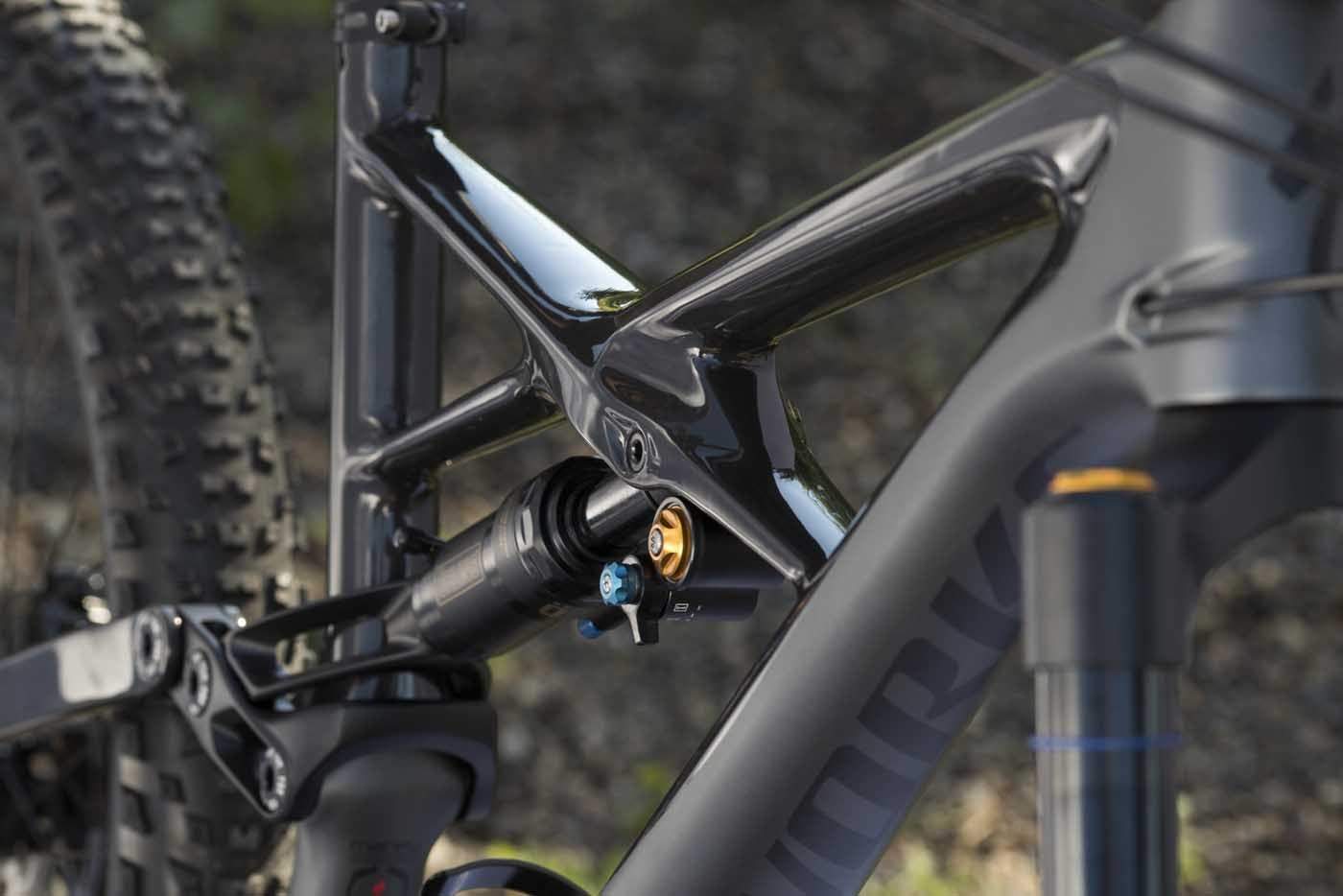
I have to give a lot of praise to the bike rear shock and the way that it has been turned. Straight off the box this thing is ready to rock. The Öhlins RXF 36 rear kept the back end connected to the trail whether it was loose, rough, or rooted and the front end handled steep, tight switchbacks like a pro climber. The climbing position is very comfortable, and even with the rear shock in the fully open position, the bike felt any excess movement during seated pedaling efforts.
So which of the two Enduro’s that I rode during the trip did I prefer more, the 650b or the 29’er? Ultimately I felt the new Enduro outperformed in both wheel size options that I rode. Compared to the previous Enduro edition, the 2017’s rear feels noticeably more progressive, with forgiving small-bump sensitivity and it sits nicely in its travel on berms and compressions. The bigger wheels do give that additional edge of stability without any noticeable loss of agility or stiffness. But it’s no easy decision, as the 650b boasts a really balanced package, that is ultra confident at high speed and is a little more playful, a little easier to flick around, than the 29’er.

I guess at the end of the day though if I were to walk into a Specialized dealer and buy Enduro and I would probably pick the 29’er. Before I rode both bikes back to back, there is no way I would have thought I’d come away preferring the 29’er, but it just comes down to the fact that Specialized build amazing 29’ers. For the type of riding I do, most of the time, and the types of Aussie trails I ride, I think the outright speed of the 29’er, the way it managed to hold its momentum coupled with how hard it allows you to attack the rougher sections of trail – yeah that’s the bike I’d pick.
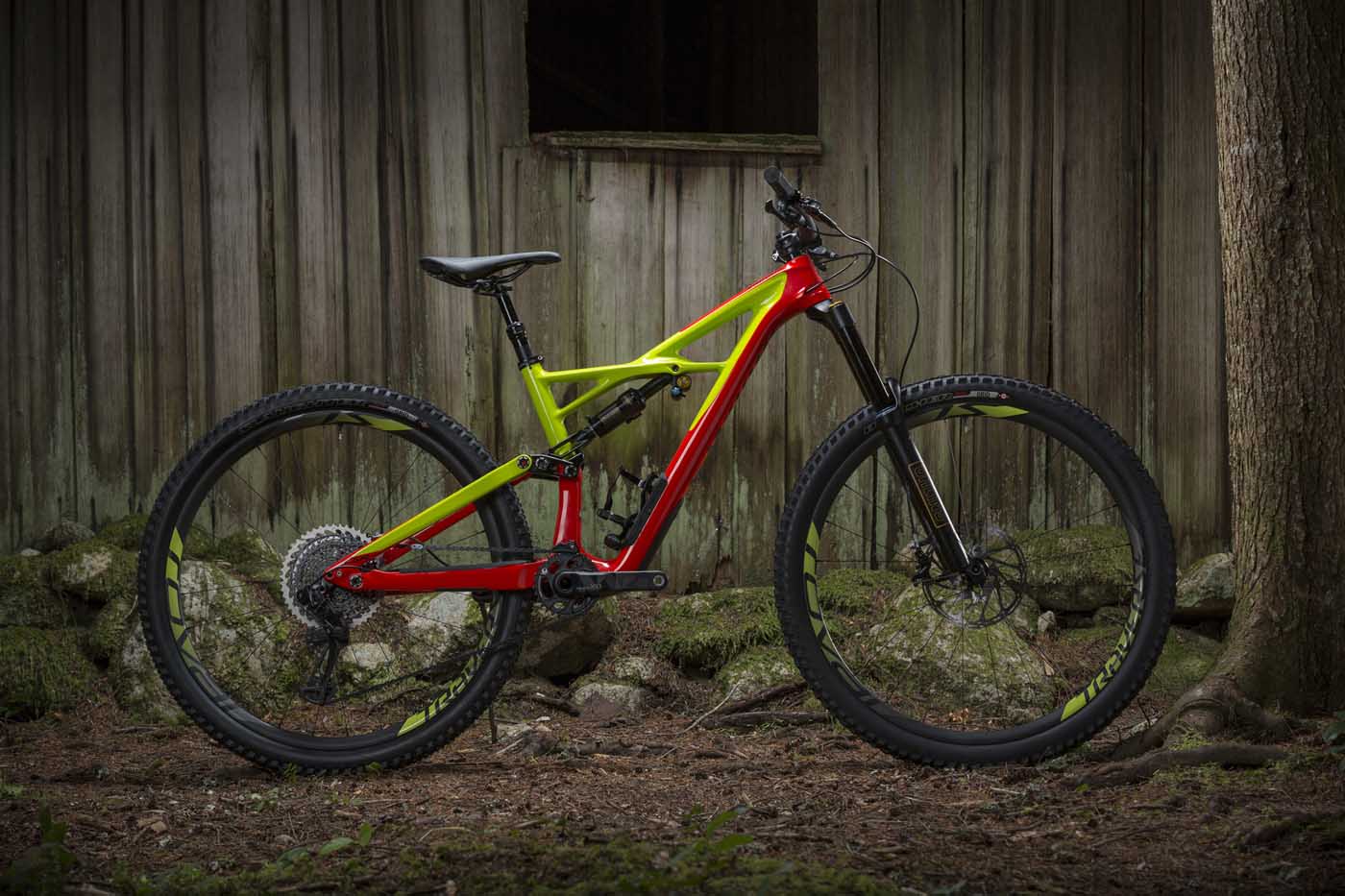
Specialized Enduro 29 Details
Rear wheel travel: 165mm
Wheel size: 29” (27.5+ compatible)
66º head angle w/ 160mm fork
Threaded bottom bracket
Boost hub spacing
SWAT door on carbon frames
Compatible only with 1x drivetrains

Specialized Enduro 650b Details
Rear wheel travel: 170mm
Wheel size: 27.5”
65.5º head angle w/ 170mm fork
2.6″ tyres front and rear
Threaded bottom bracket
Boost hub spacing
SWAT door on carbon frames
Compatible only with 1x drivetrains







